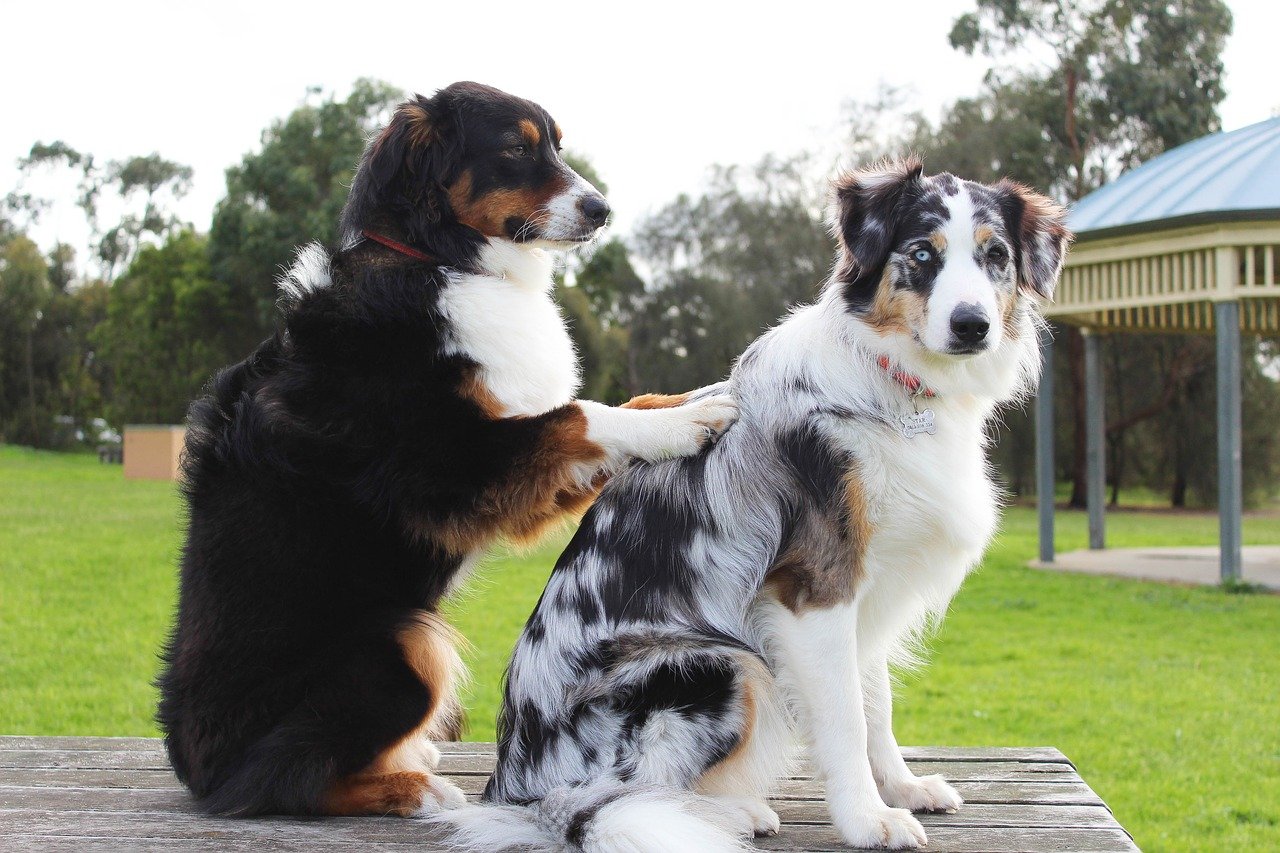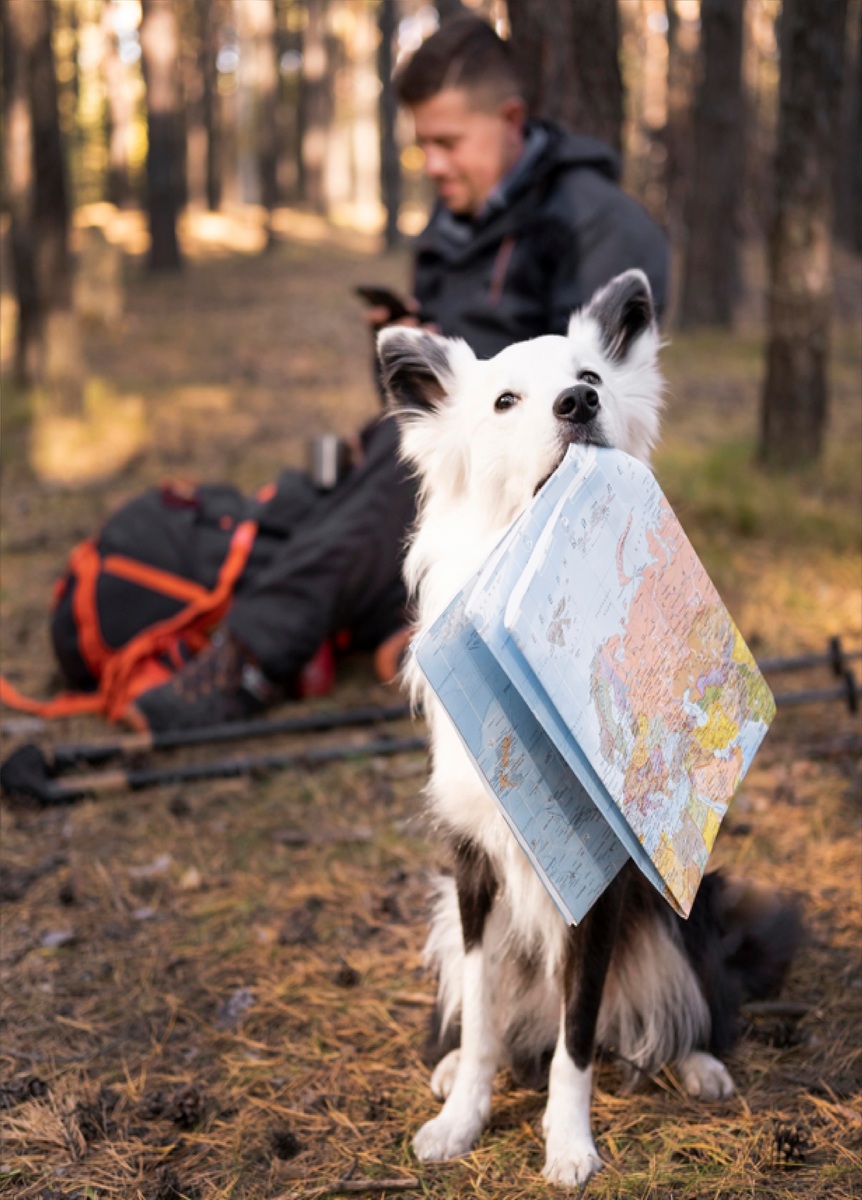
Dogs are amazing creatures, who teach us what unconditional love means! They have been our loyal companions for thousands of years, supporting us in our lives and making them more fulfilled and inspiring!
Going on walks, and playing fun games like fetch, or tug of war are among many human-dog teams’ favorite activities! However, the abilities of canines go far beyond doing funny tricks, playing games, or providing comfort and companionship... Canines have proved their intelligence and amazing learning skills, making them invaluable assistants for people with health conditions.
Dogs’ potential in medical fields, particularly in detecting diseases like diabetes, epileptic episodes, or cardiac issues, and alerting them, has been life-changing to many individuals! Behind their remarkable skills, though, there lies a training process that helps dogs do medical alert tasks consistently and reliably.
Today, we will talk about scent training, particularly for diabetes, and will give you valuable tips on what factors to consider!
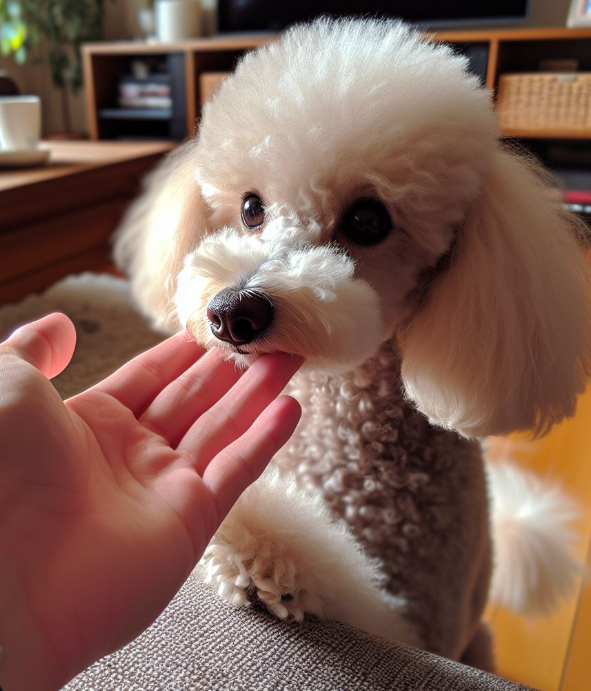
What Do Diabetic Alert/Sensing Dogs Do?
As the name implies, these dogs are trained to recognize changes in their owner’s specific scent, that indicate their blood sugar levels are too high or too low.
This skill is invaluable for individuals with diabetes, as it helps them be warned about hypoglycemia (low blood sugar) or hyperglycemia (high blood sugar) episodes, allowing them to take necessary precautions such as taking insulin.
The success of diabetic-sensing dogs is thanks to their acute sense of smell, which far surpasses that of humans. Equipped with around 300 million olfactory receptors, dogs’ noses can detect even the subtlest changes in odor compared to human noses, which feature around 5-6 million scent receptors.
However, recognizing changes in the scent, is one part of the job, when it comes to medical dog training. Usually, these types of service dogs are trained to exhibit a specific behavior once they’ve detected the changes.
These specific behaviors are typically displayed before the episode, serving as early warnings for the individual. In such cases, we refer to these dogs as medical alert dogs.
In contrast to medical alert training, if the dog exhibits a specific behavior after the episode has occurred, then we are referring to them as medical response dogs. In most cases, individuals with medical conditions, like diabetes, train their dogs to alert them in advance. This puts them in the category of medical alert dogs.
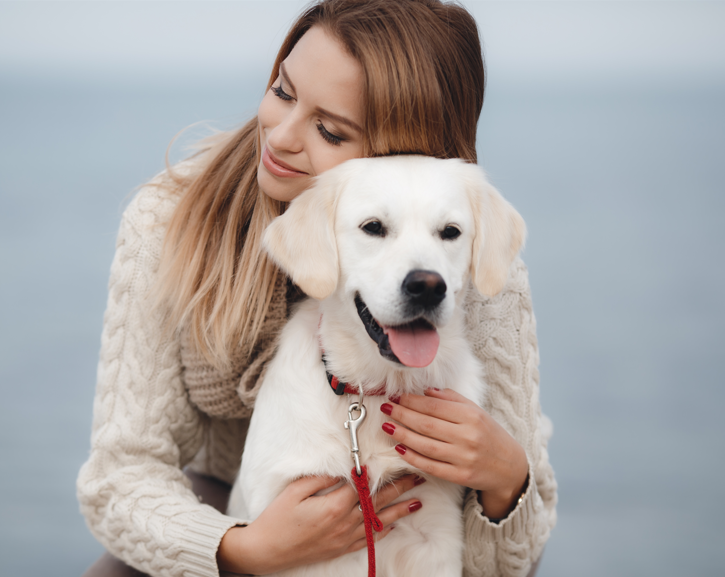
What Dogs Become the Best Diabetic Sensing Dogs?
When opting for a dog for diabetic alert training, several factors come into play, including temperament, breed characteristics, and individual traits. Never forget that dogs are individuals and their characteristics as such should be considered.
While dogs with a keen sense of smell and a trainable disposition may excel in this role, certain breeds and temperament traits are commonly preferred for diabetic alert dog training.
Alertness
Diabetic-alert dogs need to be naturally vigilant and attentive to their surroundings. They should be able to notice changes in their owner's behavior, emotions, or scent cues indicating fluctuations in blood sugar levels.
Some people report their dogs have shown quirky behaviors, even without formal training, which later turned out to be warnings about oncoming episodes. If your dog is naturally alert, they might have greater potential to excel in their role as a medical alert dog, compared to dogs who are not so attentive to their surroundings.
Trainability
Canines chosen for service dog work, especially for medical alert training, which is very specific, should be highly trainable and responsive to commands.
They should enjoy learning new tasks and possess the ability to retain and generalize learned behaviors across different contexts.
Make sure to look for a dog who is eager to learn and who won’t spend the entire day lying on the couch.
People-Oriented Personality
Typically, dogs, who perform excellently as service animals, are people-oriented and highly attuned to their owners.
The more eager a dog is to have physical contact with their owner and get their attention, the higher the likelihood will be for the dog to recognize changes in the owner’s behavior or scent.
Canines who are rather independent, and stubborn and do not enjoy being pet or hugged by their owners, will likely be more difficult to train as service animals.
Stable Temperament
A calm and balanced temperament is a prerequisite for the training to succeed. This particularly applies to demanding and potentially life-saving tasks such as alerting to medical episodes.
Dogs should remain composed and focused on their task, even in challenging environments with many distractions.
Of course, if your dog is still a puppy, you should be prepared to deal with some behavioral issues like chewing, biting, or being overly enthusiastic/unable to control their impulses. Many of these issues can typically be outgrown.
However, if you notice that the pup is not interested in people at all, is overly shy, or too reactive, this should be a red flag for you.
Breed Characteristics
As already mentioned, dogs have their individual characteristics, not to mention that deviations from the breed standard can always occur. However, several breeds have proved their qualities and excellent skills as medical alert dogs.
Labrador Retrievers and Golden Retrievers are popular choices for diabetic alert training due to their friendly disposition, trainability, and eagerness to please their owners. Their affectionate nature makes them well-suited for forming strong bonds with their diabetic handlers.
Poodles and mixed breeds including the Poodle (the Labradoodle, the Goldendoodle, the Bernedoodle, the Double Doodle) are also among the favored breeds for service dog work and medical alert dog, in particular. We will make a quick note here for those of you, who are not familiar with the latter- a Double Doodle is a mixed breed between a Labradoodle and Goldendoodle. These dogs excel in all types of service dog tasks, as they are very intelligent and highly trainable.
Breeds with a strong sense of smell, such as Beagles and Bloodhounds, are also commonly selected for diabetic alert dog training. These breeds have a natural affinity for scent detection and excel in medical alert tasks.
Last but not least, we would like to note that, while purebred dogs are often chosen for specific tasks, mixed-breed dogs with the right temperament and characteristics can also make excellent diabetic alert dogs and service dogs, in general.
Many successful service dogs come from mixed backgrounds and exhibit a combination of desirable traits from different breeds. Additionally, mixed-breed dogs often are healthier than purebred dogs, as they typically possess various genetic traits without the artificial strengthening seen in purebred lines.

Supplies
You Will Need During the Training Process
Scent Samples
Samples of the diabetic person’s saliva or sweat are essential for medical alert training, as it is based on scent training. These samples serve as the target scents that dogs learn to associate with changes in blood sugar levels.
Treats and Rewards
Treats are used as positive reinforcement tools during training to reward the dog for showing the desired behaviors. They are considered primary positive reinforcement tools, while playtime, praise, and petting are secondary positive reinforcement tools.
Treats can be divided into high-, mid- and low-value treats. We will take a closer look at the types of treats in the article below (see “scent familiarization”).
Training Clicker
As already explained above, clicker training is not mandatory but can be very effective. A clicker can be used as a marker signal to indicate to the dog when they have exhibited a desired behavior correctly. The sound of the clicker is paired with treats or rewards, helping to reinforce the association between the behavior and the reward.
Training Pouch or Treat Bag
A training pouch or treat bag allows you to keep treats readily accessible during training sessions. This will help enable the reinforcement of desired behaviors promptly. These pouches typically attach to the waist or belt.
Training Gear
A leash and collar/harness are used to control the dog's movement during training sessions and ensure safety, particularly in outdoor or public settings. You can use different types of collars or harnesses depending on your dog's size, breed, and training needs.
Scent Detection Equipment
Scent detection equipment, such as scent tubes or containers, will be used to conduct scent detection exercises and enhance the dog's ability to differentiate between target scents and other scents, i.e. the scent of the diabetic person in a normal condition or the scent of another person.
Training Log
While not mandatory, keeping a training log is highly recommended, as it helps you track your dog’s progress and determine whether they have truly understood a concept or if a certain behavior was performed randomly.
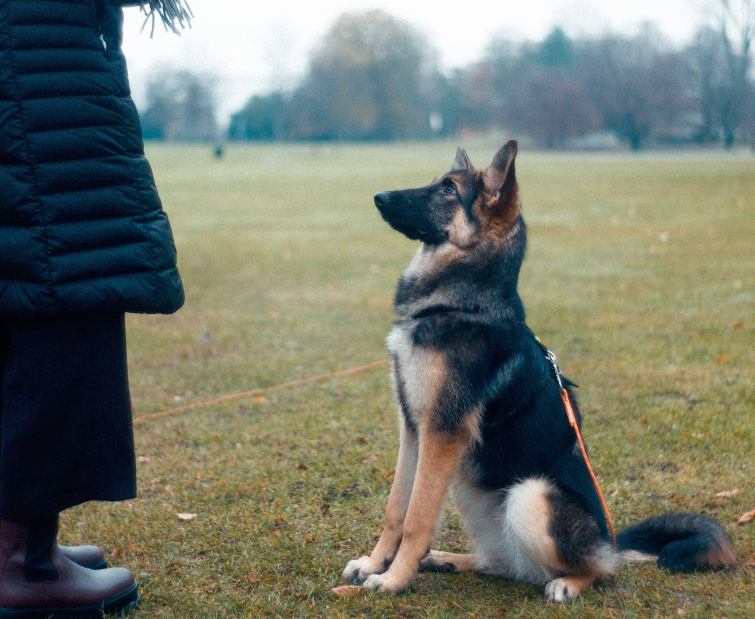
The Training Process
Training a diabetic-sensing dog requires a combination of patience, knowledge, and understanding of how dogs learn. The process typically begins with selecting suitable candidates. To be considered “suitable” for service/assistance dog work, a dog should be friendly, people-oriented, intelligent, calm and trainable. This does not automatically exclude all dogs who may exhibit some mild behavioral issues, especially due to a young age. However, it is the general temperament and dog predisposition that come into play.
The training itself is a gradual process that involves several key steps.
Basic Obedience
When talking about basic obedience training, especially in the context of service dog training, we want to clarify that it goes beyond the simplest commands like “sit”, “stay” and “come”. It also encompasses focus training, barking control, and other behaviors/commands that may be needed based on the dog’s temperament and person’s needs, i.e. “leave it” or “down”.
Clicker training is an essential component of basic obedience training, offering an effective technique for teaching canines new behaviors. The concept of clicker training is simple- you use a clicker to mark the desired behavior and then promptly reward the dog. Timing is crucial, and the click should occur immediately after the desired behavior, neither too soon nor too late.
While it is very effective and easy to implement, clicker training is not mandatory and some dog owners utilize vocal cues directly or opt for other items to produce distinctive sounds/clicks as markers.
In contrast to clicker training, which can be replaced/adapted to the handler-dog team’s needs, this is not the case with focus training.
Focus training plays a crucial role in the training process, as it helps ensure the dog can ignore distractions in various types of surroundings and remain focused on their owner. The ability to remain focused on the handler/user is particularly useful in public places. While service dogs are entitled to public access, let’s not forget that business owners have the right to exclude service dogs if they misbehave.
Alerting Behaviors
Alerting behaviors encompass all types of actions that you can train a dog to do, to notify you of an impending episode. In the context of diabetic alert dog training, the episode could include having your blood sugar levels too high or too low. Diabetic alert training works in both cases.
Examples of alerting behaviors are:
- giving a kiss;
- nose-nudging;
- pawing;
- fetching a designated item;
- barking, etc.
It can be different behaviors based on what best works for the individual. Throughout the process, the chosen alerting behavior should be reinforced consistently, gradually increasing the difficulty and complexity of the tasks. This helps ensure that the dog can respond appropriately once they recognize the specific scent of their owner during an episode.
Some dog owners decide to train their pet dogs in alerting behaviors to strengthen their bond or keep their dogs physically and mentally fit.
Whether you have embarked on a diabetic alert training journey or have decided to teach your dog some new tasks and tricks, the information in the following article may come in handy: .Easy and Fun Dog Tricks to Train and Bond With Your Dog
When
thinking of the behavior you want to teach your dog to show to alert
you, make sure to pair it with scent training only. If your paw
partner does a specific task/shows specific behavior in another
context, do not use the same task/behavior for diabetic alert
training. This will make the dog’s response to your episodes more
reliable.
Scent Collection
Before moving to scent familiarization, we need to explain how scent collection is conducted.
Use a cotton swab or gauze pad to collect saliva during a medical episode. Additionally, you can also wipe off sweat from the back of the neck, forehead, palms, armpits, feet, or legs (on the creases). If your family member or friend is assisting you during the process, make sure they do not touch the samples as their scent could potentially contaminate them.
Place the cotton or gauze in a ziplock bag or airtight bowl and mark them with the blood sugar values at this time and the date of collection. Store the samples in a freezer and use them for no longer than 8 weeks.
When you start training, take the ziplock bag out of the freezer and let it thaw for a few minutes, keeping it closed to trap the scent. If you intend to use it at the end of the day again, store it in a refrigerator. At the end of the training session, mark the ziplock bag to indicate that you have thawed it twice and place it back in the refrigerator.
As a general guideline, thawing and refreezing a scent sample should happen no more than three times before discarding it. However, if you notice your dog has stopped responding to the sample, it has dried, or it has been contaminated, you should throw it away.
Scent Familiarization
Scent familiarization is conducted by carefully introducing the specific scent associated with high or low blood sugar levels using positive reinforcement techniques.
Through repetition and reward-based training methods, dogs learn to associate the unique scent of their owner during a medical episode with positive outcomes, such as treats. Playtime or pets can also be used as secondary positive reinforcement tools.
Since food remains a primary positive reinforcement tool, it is crucial to opt for the “right” treats. At the beginning of the training process, you might need to use pieces of chicken, turkey, beef, string cheese, or other treats that are considered “high-value” rewards. They will help keep your dog highly motivated.
You should gradually phase out high-value treats, by replacing them with mid and low-value ones throughout the training process. Low-value treats can include kibble from your dog's regular food. Once your paw partner is consistent and reliable in their performance you should start rewarding them randomly, i.e. every fourth or third time, then every second time, then every fourth time again, etc.
Imprinting
In the context of medical alert dog training, imprinting refers to the process of exposing the dog to the specific scent associated with a medical condition, pairing it with positive reinforcement such as treats or play. This process helps the dog learn to recognize the scent and respond accordingly by alerting their handler when they detect it.
As the dog progresses in training, they begin to associate the detection of the target scent not only with the food reward but also with the presence of the diabetic person. This is reinforced during training sessions where the diabetic person is present, and the canine is encouraged to alert them to the scent.
Imprinting is a crucial component of the training process, as it establishes the foundation for the dog's ability to accurately detect and respond to the specific medical condition. Through repeated exposure and reinforcement, the dog learns to reliably recognize the target scent, which can potentially be life-saving for individuals who rely on these dogs for assistance.
Generalization / Training in Public
Dogs need to learn to generalize their alerting behavior across various environments and situations. This will contribute to reliably notifying their owners when they detect the specific scent, related to low/high blood sugar levels.
Generalization requires exposing the dog to a wide range of settings, including home and outdoor environments, especially public settings. This helps ensure that they can effectively detect changes in blood sugar levels regardless of the context.
During this phase of training, dogs learn to overcome distractions and environmental factors that may interfere with their ability to detect target scents accurately. It also reinforces the dog's understanding that their alerting behavior is valuable and necessary, regardless of where they are or what they're doing.
Maintenance
Training doesn't end once a dog has mastered the basics of scent detection. Continuous reinforcement and periodic refresher sessions are essential to maintain the dog's skills over time.
You should regularly review and reinforce your dog's alerting behavior, and provide them with opportunities to identify your scent among others. Practice, and introduce new challenges to keep your paw friend engaged and motivated.
Additionally, regular veterinary check-ups ensure that your dog is healthy and fit, addressing any potential medical issues that may affect their performance.
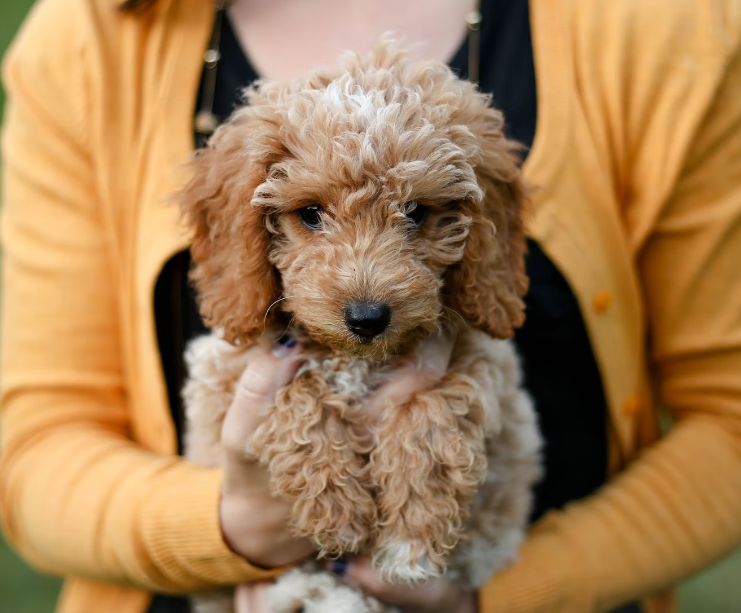
Challenges During the Training Process
Training diabetic sensing dogs is a complex and nuanced endeavor that is accompanied by various challenges and considerations.
Dogs are Individuals
Dogs, like humans, have unique personalities, and temperaments, and learn at different paces. Some dogs may excel in scent detection tasks very quickly, while others may require more time and patience to develop their skills. You should be flexible and open to adapt your methods to suit the individual needs and abilities of your canine.
Environmental Distractions / Gradual Exposure
The training environment plays a significant role in shaping the dog's behavior and response to scent cues. Factors such as noise, crowds, and other animals can present distractions that may hinder your paw friend’s ability to focus on scent detection tasks.
Having said that, you should gradually expose your dog to different environments and distractions, increasing the level of difficulty step-by-step. The process of gradual exposure to stimuli is known as “desensitization”.
Consistency and Maintenance
Training is an ongoing process that requires consistent reinforcement and practice to maintain the dog's skills.
Regular training sessions, sufficient mental and physical stimulation, exposing to different environments, and even refresher courses are essential to keep the dog's skills sharp and reliable.
Like other types of service dog training, diabetic alert dog training has its specifics and requires both the handler and the dog to have a set of skills and develop together. However, when conducted properly, and accompanied by patience, understanding, and consistency, it may succeed!




